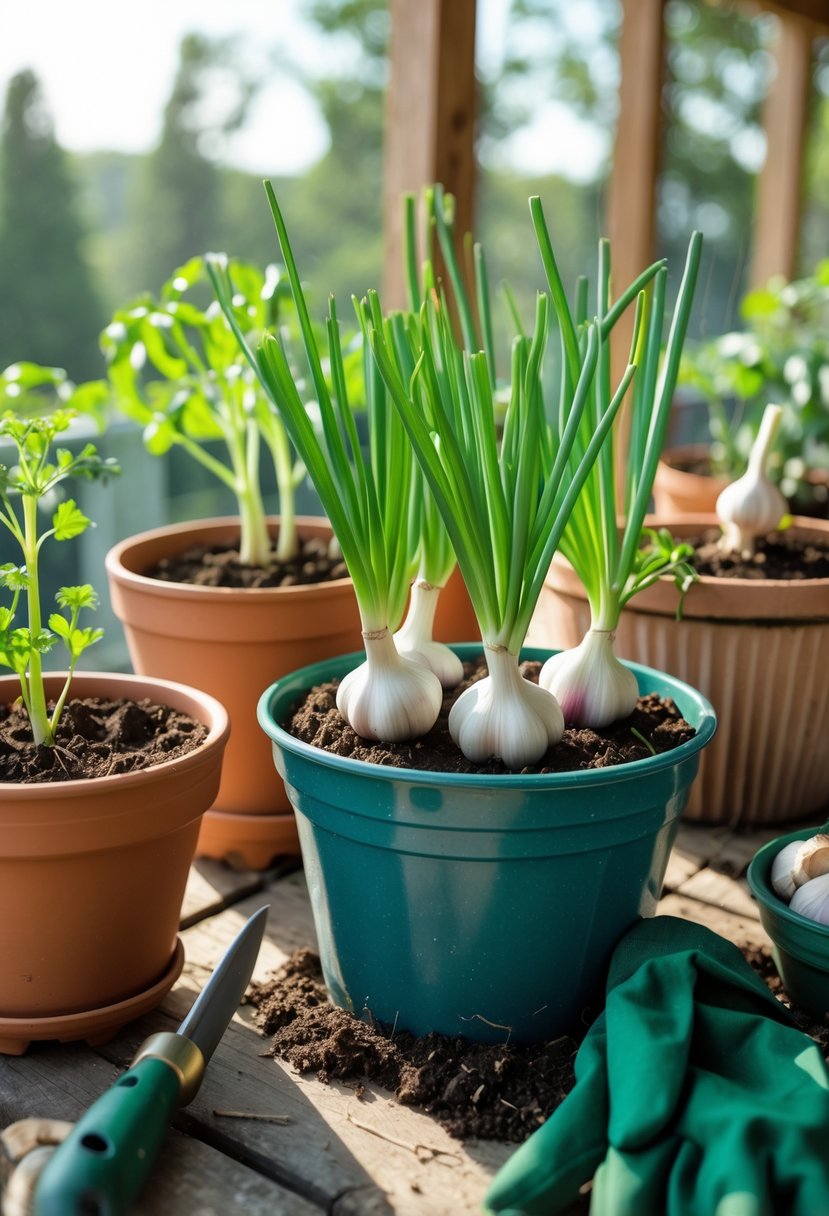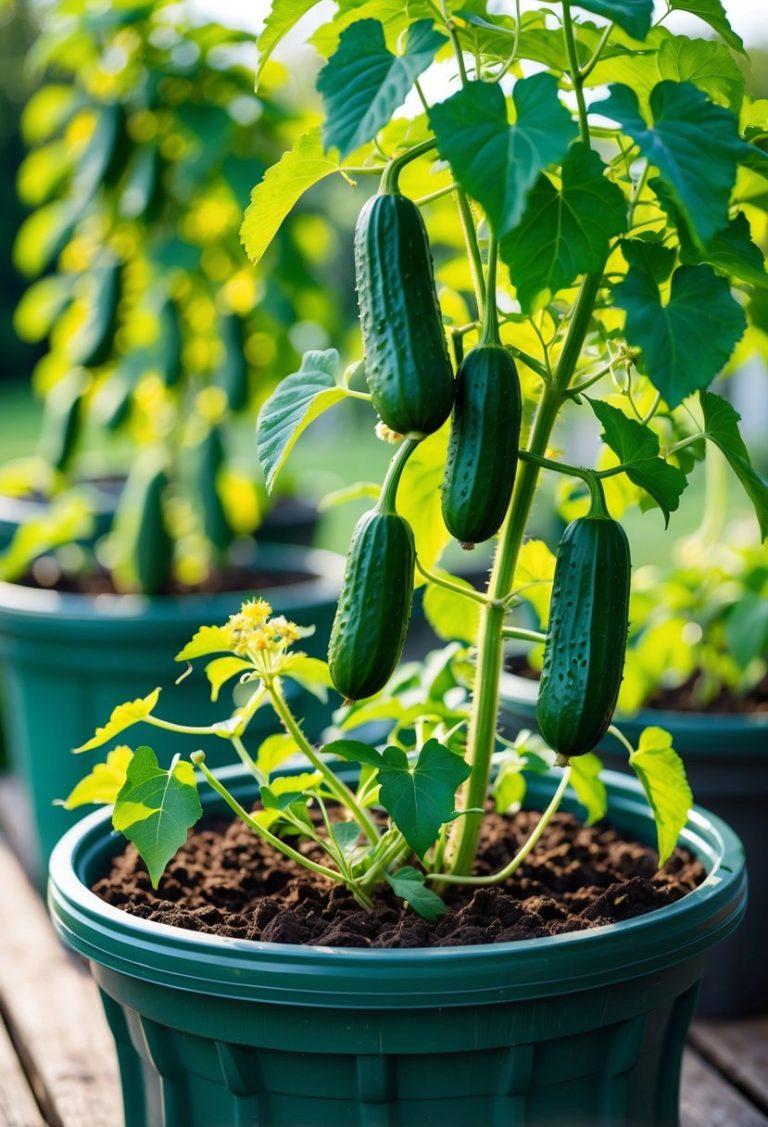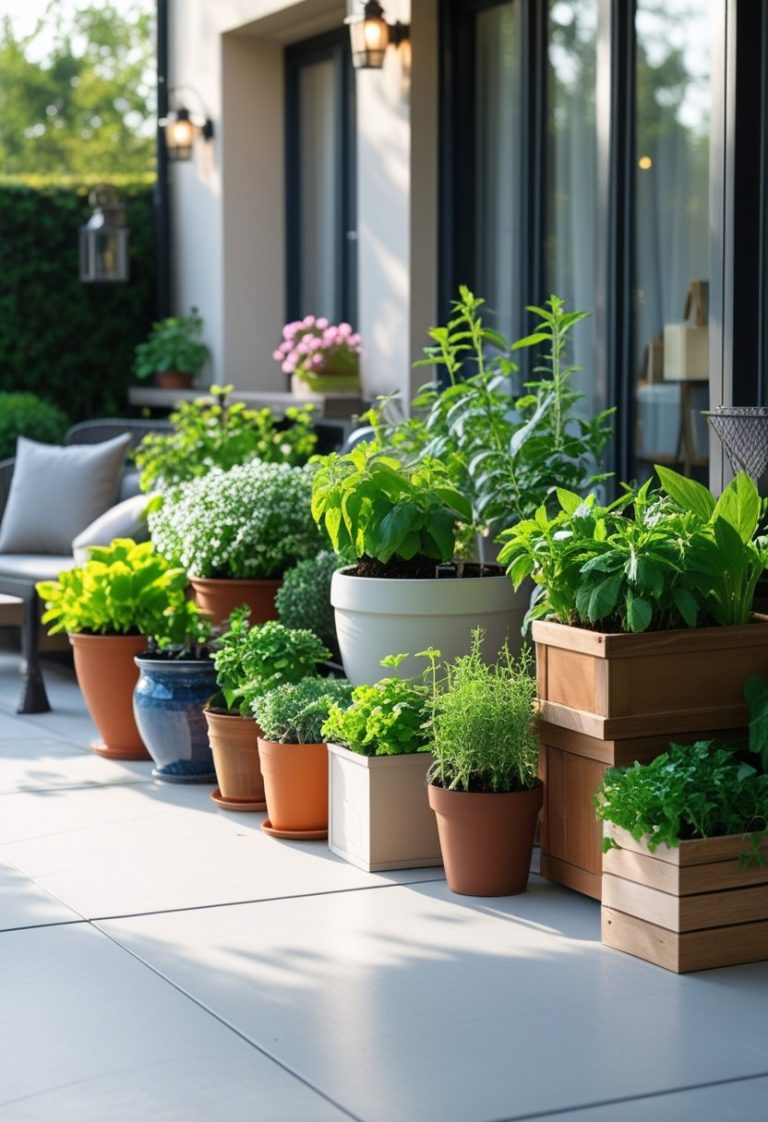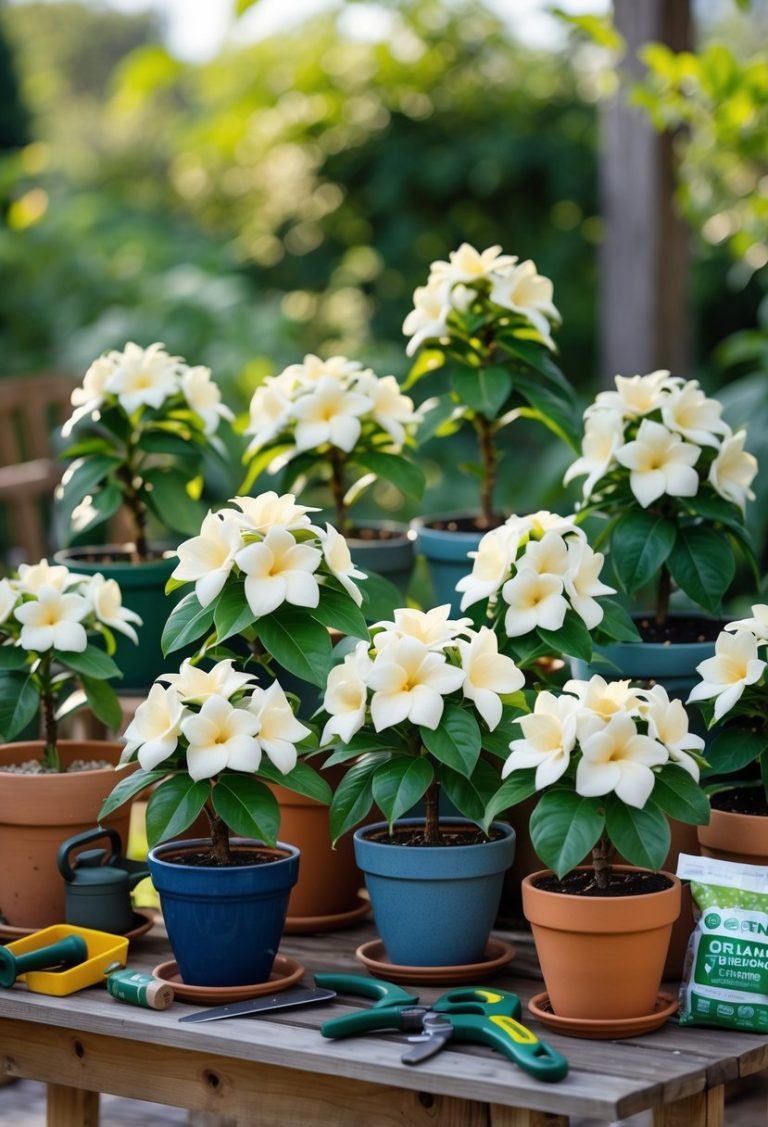Tips and Tricks to Growing Garlic in Containers: Complete Guide
Growing garlic in containers is a great way to enjoy fresh garlic even if you don’t have a big garden. With the right container, good soil, and proper care, you can grow healthy garlic bulbs in a small space. This method fits well for people with balconies, patios, or limited yard space.

Garlic needs some special attention when grown in pots, like regular watering and enough sunlight. You’ll also want to pick the right type of garlic and plant cloves at the right time to get the best harvest. If you follow some simple tips, you can avoid common problems and enjoy your own homegrown garlic by late summer.
Whether you’re new to gardening or looking to expand your container plants, this guide will give you clear steps to grow garlic successfully and make the process easier for you.
Key Takeways
- Choose a deep container with good drainage and use quality potting soil.
- Plant garlic cloves in the fall and keep soil moist but not soggy.
- Monitor sunlight and water regularly for healthy growth and a strong harvest.
Essential Steps for Growing Garlic in Containers

To grow garlic successfully in containers, focus on choosing the right garlic type, picking containers that fit the plant’s needs, and preparing soil that drains well but holds nutrients. These factors create a strong foundation for healthy garlic bulbs.
Selecting Garlic Varieties for Container Growing
When growing garlic in containers, the variety you pick matters. Softneck garlic is a good choice for beginners because it grows well in milder climates and stores longer. It also fits smaller containers since it doesn’t produce a tall flower stalk.
Hardneck garlic is better for cooler climates. It produces larger cloves and a flower stalk called a scape, which is edible. However, it usually needs more space and may be less suited for small containers.
If you plan to grow garlic indoors, softneck varieties tend to do better because they require less cold and adapt to indoor light conditions more easily.
Choosing the Best Containers for Garlic
Garlic needs space for its roots, so choose containers at least 12 inches deep and 12 to 18 inches wide. This size lets the roots grow well and holds multiple cloves if you want more than one plant.
Good drainage in the container is crucial. Make sure the pot has several holes to prevent water buildup, which can cause the bulbs to rot.
If you grow garlic indoors, pick lightweight containers you can move easily to follow the sunlight or to place near grow lights. Clay pots are good for breathability but plastic works well if you monitor watering carefully.
Preparing Optimal Potting Mix and Drainage
Use loose, well-draining soil to keep garlic healthy. Start with a quality potting mix and add organic matter like compost or well-rotted manure.
Including materials like perlite or coarse sand helps the soil drain faster and stops water from pooling around the roots.
Test your soil pH if you can. Garlic grows best in a slightly acidic to neutral range, between 6.0 and 7.0. If the soil is too acidic, adding lime helps balance it.
Good soil combined with proper drainage reduces risks of diseases and encourages strong bulb growth.
Planting and Caring for Garlic Cloves

To grow garlic successfully in containers, you must focus on proper planting techniques, consistent watering, and the right sunlight and temperature. These steps help garlic develop strong bulbs and healthy leaves, whether you grow it indoors or outside.
How to Plant Garlic Cloves in Containers
Start by choosing the largest, healthiest cloves from a fresh bulb. Keep the papery skin on each clove to protect it.
Use a container at least 12 inches deep with drainage holes to prevent water buildup. Fill it with well-draining soil mixed with compost or fertilizer.
Plant each clove pointy side up, about 2 inches deep, and space them 4 to 6 inches apart. Firm the soil gently on top and water lightly after planting.
If you grow garlic indoors, place the container near a sunny window or under a grow light to keep conditions stable.
Watering and Fertilizing Container Garlic
Water your garlic evenly, keeping the soil moist but not soggy. Overwatering leads to root rot, so let the top inch of soil dry before watering again.
During active growth, water deeply once or twice a week. Reduce watering in the last month before harvest to help bulbs mature.
Feed your garlic every 3 to 4 weeks with a nitrogen-rich organic fertilizer like fish emulsion while leaves grow. Switch to a phosphorus-heavy fertilizer when bulbs begin to form.
Avoid fertilizing for the last month. This focus allows the bulbs to develop fully without excess leaf growth.
Sunlight and Temperature Requirements
Garlic needs at least 6 to 8 hours of direct sunlight daily for healthy growth. If indoors, use a bright window or supplemental grow lights.
Ideal temperature for garlic is between 60°F and 70°F (15°C–21°C). Too much heat or cold slows growth or causes stress.
If you grow indoors, avoid placing containers near heaters or drafty windows. Garlic tolerates cooler temperatures but does not grow well in shade or poor light.
Keeping a consistent temperature and good light exposure ensures strong plants and larger bulbs.
Maximizing Growth and Avoiding Common Mistakes

To get the best garlic from your container garden, focus on keeping pests under control, promoting strong bulb growth, and steering clear of frequent errors. Proper care and attention to these details will help your garlic thrive even in limited space.
Managing Pests and Diseases in Containers
Containers can still attract pests like aphids and fungal diseases. Check your plants regularly for small insects or spots on leaves.
Use organic insecticidal soap or neem oil to control pests. Avoid overwatering, as wet soil encourages fungal growth.
Make sure your container has drainage holes to prevent water buildup. Remove any dead or diseased leaves promptly to stop problems from spreading.
Planting garlic near pest-repelling companions like tomatoes or carrots in adjacent containers can also reduce pest issues.
Encouraging Healthy Bulb Development
Healthy bulbs start with the right soil and watering habits. Use loose, well-draining soil mixed with compost or aged manure.
Plant cloves with the pointed end up, about 2-3 inches deep. Space cloves at least 6 inches apart to give roots room to grow.
Water when the top inch of soil feels dry. Deep watering encourages strong root development.
Fertilize lightly once a month with balanced fertilizer avoiding too much nitrogen, which leads to more leaves, not bigger bulbs.
Prune scapes (flower stalks) when they curl to help the plant focus energy on making bulbs.
Mistakes to Avoid When Growing Garlic in Containers
Don’t overcrowd your container; tight spaces stunt growth. Garlic needs space for airflow and nutrients.
Avoid planting cloves upside down. The pointy side must face up for proper sprouting.
Check soil quality before planting. Poor soil slows growth and leads to weak bulbs.
Don’t harvest too early or too late. Wait until some leaves turn yellow and dry but avoid leaving bulbs in the soil too long, which can cause splitting.
Don’t store garlic in the fridge, which can make it sprout prematurely. Keep bulbs in a dry, dark place instead.
Harvesting and Storing Homegrown Garlic

You need to watch your garlic plants closely to know when it’s time to harvest. After picking, garlic must be cured properly to store well. You can also use fresh garlic and its greens in cooking right away.
When and How to Harvest Garlic in Containers
Harvest garlic when the lower leaves turn brown but the top leaves remain green. This usually happens about eight months after planting. In containers, the soil dries out faster, so check often.
Stop watering your garlic a week before harvest to allow the soil to dry. Use a garden fork or hand tool to gently loosen the soil around the bulbs. Don’t pull the garlic out because the stalks break easily.
After loosening, carefully lift the bulbs out, brushing off excess soil but don’t wash them. If a bulb is damaged, use it immediately—it won’t store well.
Curing and Storing Garlic After Harvest
Curing is drying your garlic properly before storing. Bundle 8 to 10 garlic plants together with twine, hanging them bulb-side down in a dark, dry place with good air circulation.
Cure garlic for 3 to 4 weeks until the outer skin is papery and the stems and roots are dry. Avoid sunlight because it can change the flavor.
Store your cured garlic in a cool, dark place between 32°F and 40°F. Use mesh bags or hang it braided if you grew a softneck variety. Hardneck garlic stores for 3-4 months; softneck can last 6-8 months.
Using Fresh Garlic and Greens
You don’t need to wait to enjoy garlic after harvest. Fresh bulbs have a milder flavor than dried garlic. Use bulbs with damaged skins right away since they spoil quickly.
Garlic greens, or scapes, are edible too. Harvest scapes when they curl, before bulbs mature, and use them in salads or pesto. They add a mild garlic taste and are tender and fresh.
Both fresh garlic and greens enhance your meals while you wait for cured garlic to be ready for longer storage.
Frequently Asked Questions

Growing garlic in containers requires the right soil, planting depth, and care to ensure healthy bulbs. You will also need to manage winter conditions if growing outdoors and adapt techniques for indoor growth. Harvest time varies, and hydroponic options exist but need specific setups.
What is the optimal soil composition for growing garlic in containers?
Use a light, well-draining potting mix blended with compost. The soil should retain moisture but not stay soggy to prevent root rot. Avoid heavy garden soil or clay.
Choose a mix that is fertile and loose to allow roots to grow freely.
What are effective strategies for overwintering garlic grown in pots?
Move your garlic containers to a sheltered location during harsh winter weather. You can wrap pots with insulation material like bubble wrap.
Keep watering minimal in winter, only when soil is dry. Avoid letting the soil freeze completely.
What is the ideal depth for planting garlic cloves in containers?
Plant cloves 1 to 2 inches deep, with the pointed end facing up.
Cover with mulch and firm the soil around the cloves gently. Leave about 2 inches of space between cloves.
How can you successfully grow garlic indoors using pots?
Place pots in a spot with at least 6 hours of direct sunlight, such as a south or west-facing window.
Maintain consistent moisture without overwatering. Use a high-quality potting mix with good drainage.
Provide balanced fertilizer every 2-3 weeks once shoots appear.
What is the typical timeframe for harvesting garlic when grown in containers?
Garlic usually takes about 8 to 9 months from planting to harvest in containers.
You can plant in fall for a summer harvest. Spring plantings will mature faster but yield smaller bulbs.
Harvest when about half the leaves turn yellow.
Can you grow garlic hydroponically, and if so, how?
Yes, garlic can be grown hydroponically using nutrient-rich water solutions.
You need a stable water system, proper nutrients, and good oxygen supply to the roots.
Monitor water quality and adjust nutrients as garlic grows to encourage healthy bulb development.






